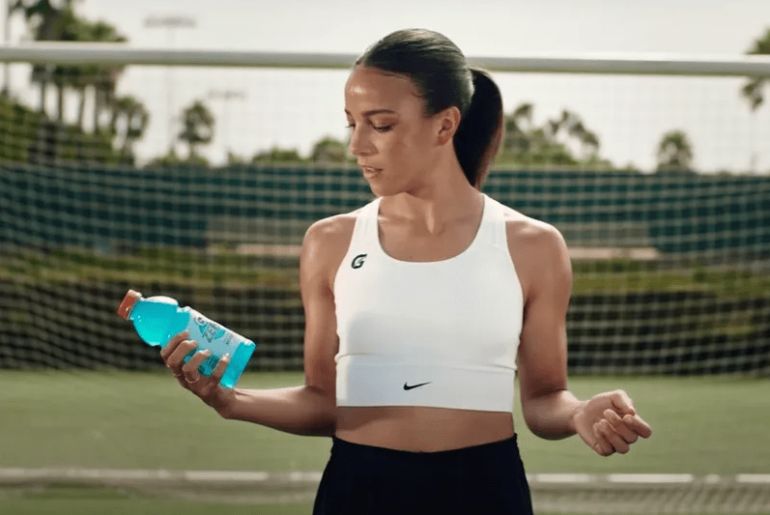Brands must stop siloing PR, affiliate, and paid media if they want to build consumer trust that converts.
For years, brands tried to split the difference by hiring a PR agency for visibility, an affiliate manager for commerce coverage and affiliate partnerships, and a media buyer for paid social scale. Seven years ago, I, in fact, was one of them as the former VP of Marketing and Founding Team at Ritual. On paper, it made sense. In practice, I found it created silos, competing agendas, and a lack of shared accountability and synergy across agencies and partners.
PR teams fought for glossy earned placements that drove awareness, but had no understanding of how to interpret the performance data that was now available through affiliate marketing. Affiliate was treated as a “last-click” discount lever instead of a strategic storytelling channel. Paid ads delivered reach, but eroded credibility the more aggressively they followed you around online and touted huge discounts (a never-ending race to the bottom).
Trust is the new currency
The customer journey has never been more fragmented. Discovery happens everywhere: a podcast shoutout, a Reddit thread, a TikTok Shop haul, a Substack product review, or even an AI-powered search result.
In this reality, trust is the only real currency. Consumers don’t care whether a placement was earned, affiliate-driven, or paid; they care if it feels credible, consistent, and relevant to them.
So how can brands actively build that trust?
- Be transparent about incentives. Consumers aren’t turned off by affiliate links, they’re turned off when they feel misled. Work with creators and publishers who disclose clearly and genuinely believe in your product.
- Invest in quality storytelling. Clickbait and discount-driven messaging might drive short-term traffic but rarely long-term trust. Prioritize partners and content that add real value or perspective.
- Align messaging across channels. The fastest way to lose credibility is inconsistency. If your paid ad says one thing and your press coverage another, consumers notice. Every touchpoint should reinforce the same brand truth.
- Measure what matters. Awareness, reputation, and conversion are all valid goals, but you have to know which you’re pursuing with each channel. That clarity builds internal trust, too.
The takeaway for founders and marketers is simple: if your PR, affiliate, and paid media aren’t working together, you’re sacrificing trust and growth.
The post-PR agency model
At Dreamday, we coined the term Performance PR: an integrated approach where affiliate and earned media work in tandem. Every consumer press hit is designed to drive not just visibility, but measurable revenue. For brand and business press (think: Inc. or Fast Company) we measure success using the Barcelona Principles, a global framework for evaluating PR effectiveness. In plain terms, the Barcelona Principles remind us that not all press should be measured by direct sales. Some coverage exists to build awareness, credibility, or influence perception, which are all valuable outcomes in their own right.
A feature on a founder’s leadership style, for example, may not drive immediate sale conversions, but it can meaningfully shape brand reputation, attract talent, and open doors for strategic partnerships. Performance PR refers to consumer press that can be measured, actually very effectively these days, through affiliate marketing and commerce’s growing role in publisher objectives (and revenue).
Quality Media has pioneered what we call Performance Publishing, a model where editorial storytelling, creator-led content, and paid amplification combine to outperform traditional brand campaigns.
At both agencies, our main KPI isn’t awards or impressions, it’s the case studies we create for our clients. We don’t rest on our laurels; we’re only as good as the last results we delivered. That focus keeps our teams sharp, ensures accountability, and, most importantly, builds client trust over time.
When we applied this model for clients like Quince or The Bouqs, it wasn’t about choosing between “story” or “scale.” It was about ensuring every placement, whether in Vogue, on TikTok, or in a sponsored story, pulled in the same direction: building credibility and driving conversions.
The key insight: trust compounds when PR, affiliate, and paid collide, not when they compete.
A playbook for founders and marketers
So how can brands put this into practice?
- Audit your partners. Are PR, affiliate, and paid run by separate agencies or teams competing for credit with different KPIs? If so, you’re eroding trust before you’ve begun.
- Bring your partners together. Get your PR, affiliate, and paid leads in the same room (or Slack channel). Share KPIs and have them co-own performance. When everyone is accountable to the same metrics, alignment, and trust, follow.
- Consolidate when needed. If your agencies are working in silos or competing with one another, it’s time to rethink your structure. That might mean consolidating scopes, appointing an internal lead who oversees the full funnel, or finding a partner built for integration.
- Think like a consumer. Ask yourself: if someone Googled my product, or if ChatGPT surfaced me in a recommendation, would they see consistent, credible validation across multiple sources?
- Build for convergence. Instead of planning PR, affiliate, and paid as separate campaigns, design them as parts of the same trust-building system.
The future belongs to trust
Trust has always mattered in marketing. What’s different now is how fragile (and essential) it has become for growth.
The brands that win in the next five years won’t be the ones spending the most on ads or executing the flashiest PR moments. They’ll be the ones that can point to undeniable results: credible press hits, measurable affiliate-driven revenue, and high-performing creative that amplifies both.
That’s why we hold ourselves to the same standard we ask of our clients: results that stand up as case studies. Trust isn’t a buzzword—it’s the most valuable KPI left. And it’s earned daily.
Feature image credit: Getty Images












